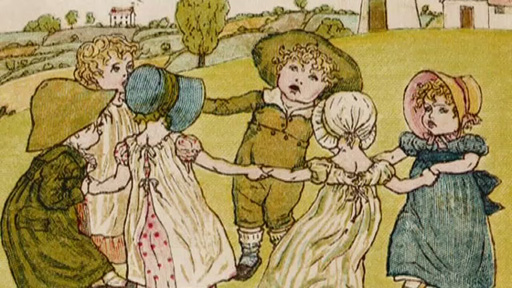5 Illustration
Illustration is increasingly recognised as an integral part of children’s book production, playing a role equally, if not more, important than the words of a story. This increased recognition is demonstrated by the fact that, since 1955, the Chartered Institute of Library and Information Professionals, or CILIP, has awarded the Kate Greenaway Medal for ‘distinguished illustration in a children’s book’, alongside the more longstanding Carnegie prize for a work of children’s fiction (inaugurated in 1936). The Greenaway Medal has been awarded to well-known illustrators such as Shirley Hughes, Raymond Briggs, Quentin Blake and Anthony Browne. Another sign of the growing acknowledgement of the artistry and importance of pictures alongside words in children’s fiction is the now quite common use of the term ‘authorstrator’. This term was first coined by illustrator Martin Salisbury to emphasise that the illustrator needs to have an authorial voice in the finished text, as the job of the pictures is just as much a storytelling one as that of the words. In the next activity you will hear Salisbury discussing illustration.
Activity 7
Watch the following video featuring Martin Salisbury, who introduces the work of some well-known and historically important illustrators of children’s books. We have included some examples from these illustrators for you to consider as you listen; you may wish to look on the internet for more. As well as being an illustrator, Martin Salisbury teaches children’s book illustration at Anglia Ruskin University, Cambridge.
As you listen, reflect on what the images, and Salisbury’s commentary on them, tell us about changing ideas about childhood and the child. What do you learn about the complexity of children’s books?

Transcript: Illustrators of children’s books
Discussion
This tour of the work of famous illustrators enables us to see how picture books have evolved according to the social and historical context in which they were produced. Kate Greenaway’s idyllic imagery, for example, suggests that the 1880s were a time of nostalgia in Britain, dominated by an idea of childhood as safe, innocent and carefree. The style, words and imagery of the Smith/Scieszka/Leach partnership, on the other hand, suggest that a certain amount of mischief – even anarchy – is normal and acceptable in a young child. Salisbury’s in-depth knowledge of illustration enables him to present a nuanced assessment of the work of a wide range of children’s illustrators. His commentary shows how complex this field is. For example, illustration is at the heart of debates about what is ‘suitable’ for children, and the level of sophistication that they can cope with. Salisbury appears to be of the view that children can absorb and enjoy very sophisticated images, and that the British market, at least, tends to be rather conservative in this regard.
